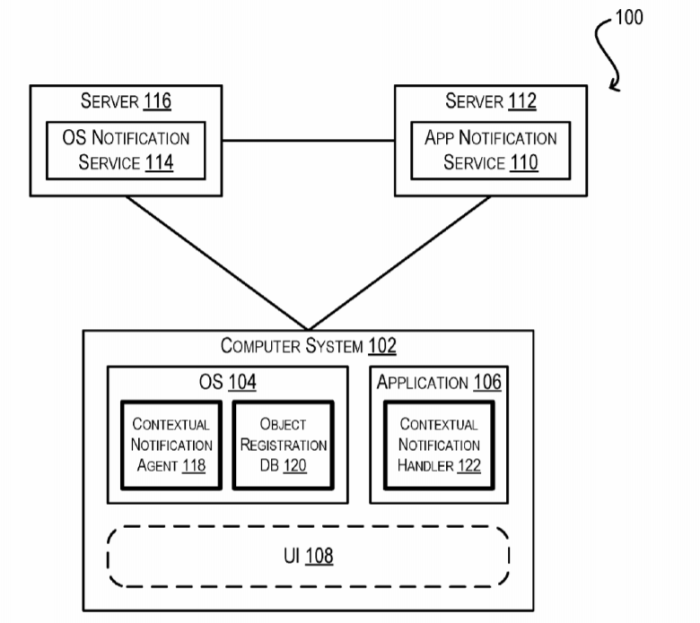Microsoft Patent Shock Notifications: Protecting Devices and Users – This intriguing subject delves into the world of innovative technologies designed to safeguard devices and users from unexpected shocks and impacts. From intricate algorithms that detect and analyze shock events to sophisticated notification mechanisms that alert users, Microsoft’s patent portfolio reveals a commitment to creating a safer and more reliable digital experience. This exploration examines the key areas of innovation, the various applications, and the potential impact of these groundbreaking technologies.
Imagine a world where your smartphone, smartwatch, or even your car can instantly detect and respond to a sudden shock or impact. Microsoft’s patent portfolio for shock notification technologies is paving the way for this future, offering a range of solutions that can protect devices and users from potential damage and harm. From the intricate algorithms that analyze shock events to the diverse notification mechanisms that alert users, this exploration delves into the key areas of innovation and the potential impact of these groundbreaking technologies.
Future Directions
The field of shock notification technologies is rapidly evolving, driven by advancements in sensor technology, machine learning, and the growing demand for safety solutions. Microsoft’s patents play a significant role in shaping the future of these technologies. This section explores emerging trends and future research directions, focusing on potential advancements in shock detection algorithms, notification mechanisms, and applications.
Advancements in Shock Detection Algorithms
Advancements in machine learning and artificial intelligence (AI) are revolutionizing shock detection algorithms. These algorithms are becoming more sophisticated, enabling more accurate and reliable detection of shocks, even in complex environments.
- Deep Learning Algorithms: Deep learning algorithms are increasingly used for shock detection. These algorithms can learn complex patterns from large datasets, improving the accuracy and sensitivity of shock detection. For example, Convolutional Neural Networks (CNNs) can be trained to identify specific patterns in sensor data that indicate a shock event.
- Hybrid Algorithms: Hybrid algorithms combine different techniques, such as signal processing, machine learning, and expert systems, to enhance shock detection. These algorithms can adapt to different shock types and environments, providing more robust and accurate detection.
Enhanced Notification Mechanisms
Notification mechanisms are evolving to provide more timely, effective, and personalized alerts.
- Real-time Notifications: Real-time notifications ensure that users receive alerts immediately after a shock event occurs, enabling faster response times. This is particularly important in emergency situations.
- Context-aware Notifications: Context-aware notifications consider the user’s location, activity, and other factors to tailor alerts to specific situations. For example, a notification system could prioritize alerts based on the user’s proximity to a potential hazard.
- Multi-modal Notifications: Multi-modal notifications utilize various channels, such as visual, auditory, and tactile feedback, to ensure that users receive alerts even in noisy or distracting environments. This could include visual alerts on a smartphone, auditory alerts through a wearable device, or tactile alerts through a vibrating smartwatch.
Expanding Applications, Microsoft patent shock notifications
Shock notification technologies are finding applications beyond traditional safety scenarios. The potential for these technologies is vast and continues to grow.
- Healthcare: Shock notification systems can be used to monitor patients with conditions such as epilepsy or heart disease, providing timely alerts to medical professionals in case of a seizure or cardiac event.
- Sports and Fitness: These technologies can be integrated into wearable devices to monitor athletes’ movements and provide real-time feedback on performance, potentially preventing injuries.
- Transportation: Shock notification systems can be used in vehicles to detect collisions and deploy airbags or other safety features.
- Industrial Automation: These technologies can be used in industrial settings to monitor equipment and prevent accidents.
Conclusive Thoughts: Microsoft Patent Shock Notifications
As technology continues to evolve, the importance of safeguarding devices and users from shock events will only increase. Microsoft’s patent portfolio for shock notification technologies is a testament to the company’s commitment to innovation and safety. By exploring the intricacies of shock detection algorithms, notification mechanisms, and potential applications, we gain a deeper understanding of how these technologies can shape our future and contribute to a safer and more reliable digital experience.
The recent wave of Microsoft patent shock notifications has raised concerns about the potential impact on tech innovation. It seems like a parallel trend is emerging, with Google expanding its family plan beyond music, as seen in this recent article.
This move suggests a broader shift towards family-oriented digital services, which could be further influenced by the evolving landscape of patent litigation.
 Securesion Berita Informatif Terbaru
Securesion Berita Informatif Terbaru
